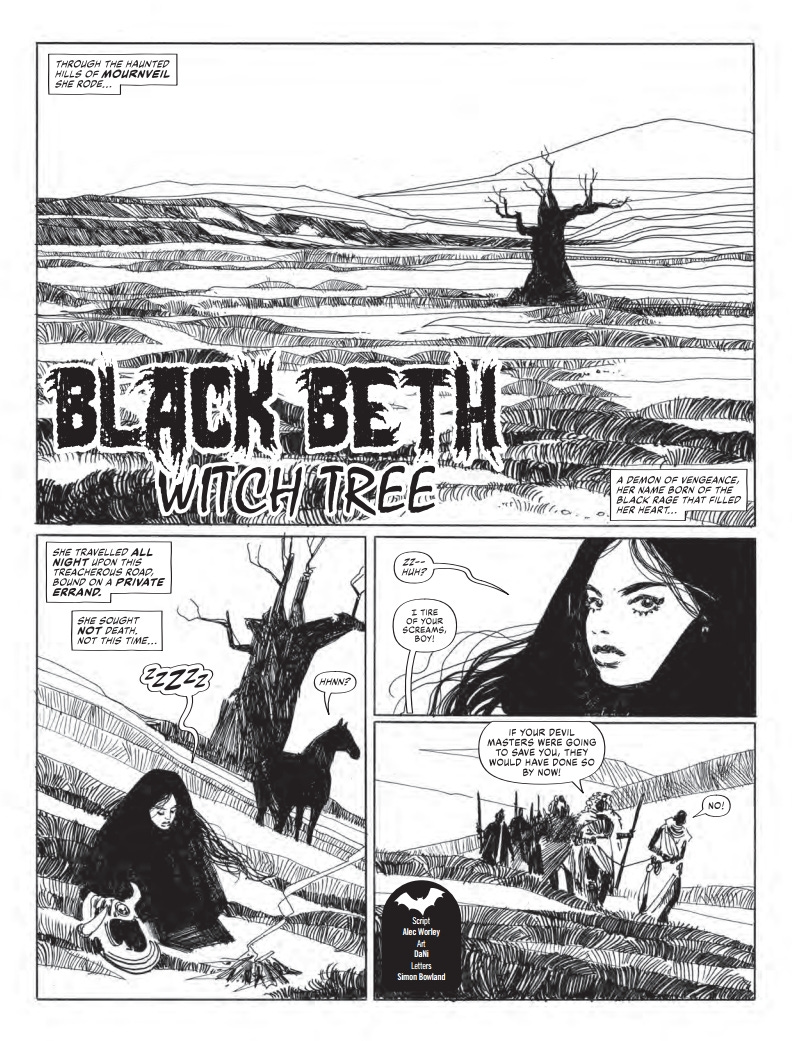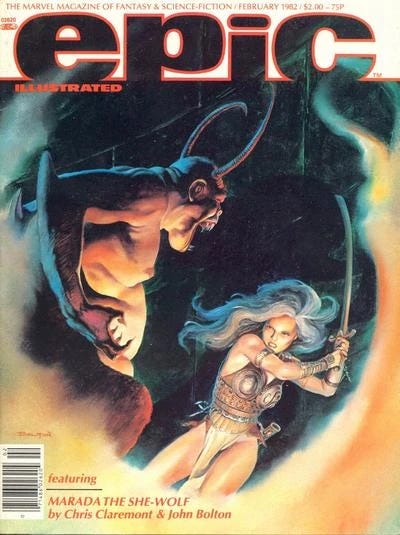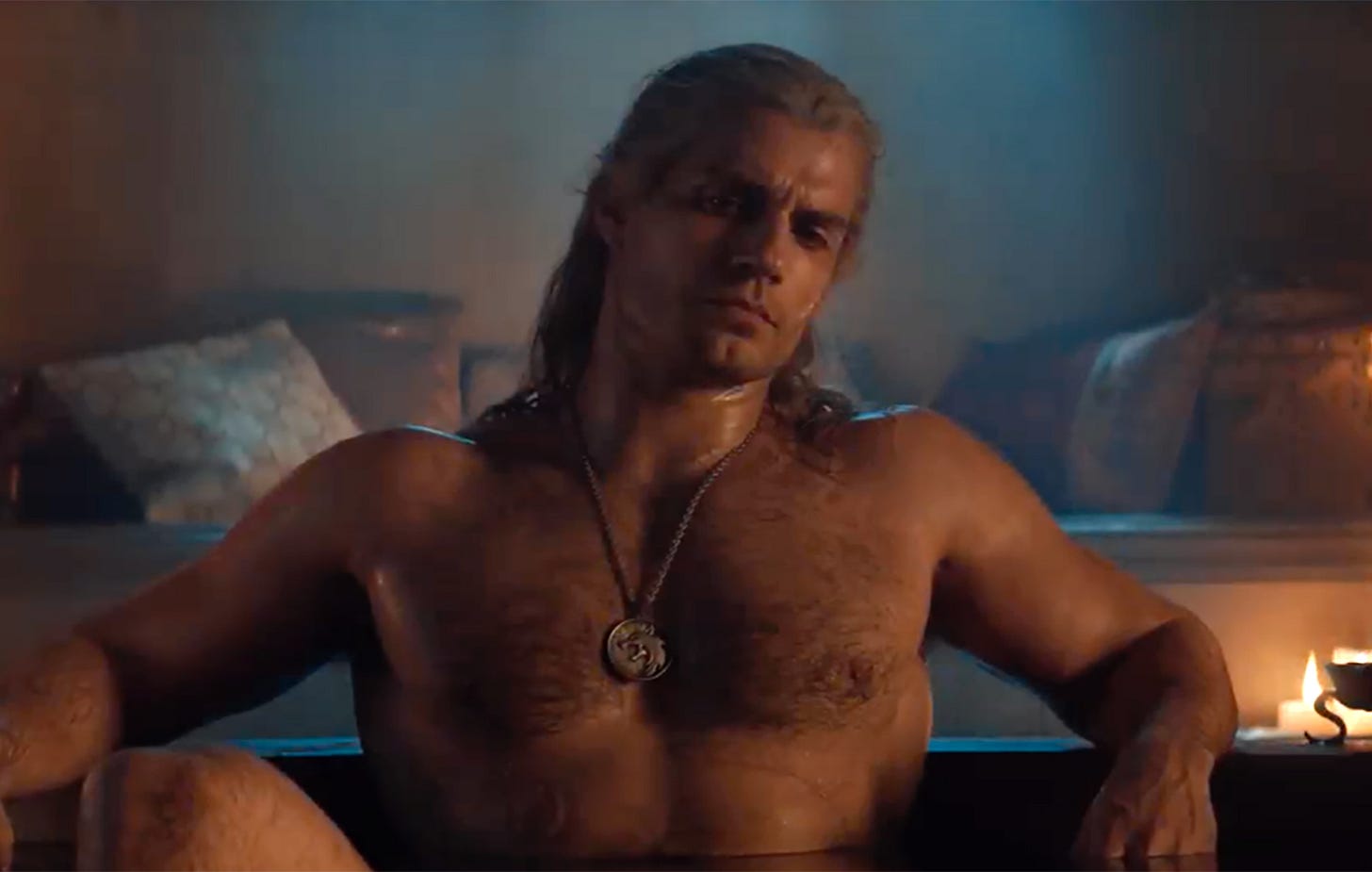Swords, Sorcery and the She-Wolf
In the age of corporate epic fantasy has pulp-era sword and sorcery become more appealing than ever? Wondering where the genre stands as I discover a forgotten fantasy heroine from the Marvel vaults
Sword and Sorcery (or Heroic Fantasy1) has long cast a spell over me as unbreakable as the riddle of steel. I love the absorbing worlds, powerplays and sagas of Epic Fantasy. But sometimes I just wanna see a barbarian shove a yard of Cimmerian steel through a bad guy’s face.
The pleasures of Sword and Sorcery are primal and undeniable, their tales descended from those of Gilgamesh, Māui, Anansi and Odin, violent, pioneer culture heroes who tamed the monster-filled wilderness of newly-forged creation before fading into legend. In the same sense, it’s the bulldozer heroes of Sword and Sorcery – Conan and Red Sonja – who pave the way for the ‘civilised’ epic worlds of Tolkien and George R. R. Martin. But if you’ve read Robert E. Howard, the godfather of 20th century Sword and Sorcery, you’ll know that he felt civilisation was just another – even worse – form of savagery.
My love for tales of swashbuckling and monster-bashing was rekindled in earnest with my writing Black Beth, a thoroughly obscure Sword and Sorcery heroine from British comics, whom I revived for Rebellion with the sensational Greek artist Dani. I wanted to write exactly the kind of continuity-free heroic tales I don’t see much of these days.
I harked back to my youth devouring Fighting Fantasy gamebooks and watching Hawk the Slayer on repeat. I grabbed missing back issues of vintage White Dwarf and Warlock on eBay, losing myself in those grimdark illustrations that had so hypnotised me as a kid. But nostalgia becomes poison when one drinks too deeply, and I want to see what the genre is doing right now.
As the Conan comics license recently passed to Titan, I read Into the Crucible, the first trade of Jim Zub’s Conan run for Marvel. It’s not as weighty and thematic as the earlier Jason Aaron run, which pulled off the nigh-impossible trick of modernising Conan without neutering him. Zub also falls back on a lot of familiar tropes (deathtrap dungeons, bloodthirsty sentient swords), but, man, does he know his fantasy and – most importantly – how to make a story gallop along in the true spirit of high adventure.
Over in literary Sword and Sorcery, I’m noticing a lot of regular fiction anthologies popping up. Check out Savage Realms Monthly, Tales from the Magician’s Skull from Goodman Games, and A Book of Blades from the podcast Rogues in the House.
As I (over-)prepare to DM my first game of Dungeon Crawl Classics by Goodman Games (I’ll be running the fan-favourite module Sailors on the Starless Sea), I’m wondering how much the OSR (old school revival) movement in tabletop RPGs is contributing to this growing interest in pulp-era ‘Appendix N’ fantasy.
“All of the above authors, as well as many not listed, certainly helped to shape the form of the game. For this reason, and for the hours of reading enjoyment, I heartily recommend the works of these fine authors to you.”
From Appendix N: Inspirational and Educational Reading in the 1979 Dungeon Master’s Guide by Gary Gygax, co-creator of Dungeons and Dragons
Given the current obsession with gargantuan Marvel-style world-building and the vortex of continuity that comes along with it, I wonder if people are becoming more responsive to good old-fashioned one-and-done adventures.
Consider how the scenario-of-the-week tales of The Mandalorian feel focused, agile and alive compared to the erratic, ponderous likes of The Book of Boba Fett and Obi-Wan Kenobi. Star Wars (the now-seemingly-lost original movie from 1977) was essentially a 1930s Western in space. It was all about momentum, excitement, and good guys vs. bad guys. It wasn’t weighed down by the baggage of continuity. It didn’t pause to ponder moral quandaries. It didn’t obsess over fan-baiting details. And you didn’t need to connect the dots to twenty other movies and TV shows you may not have even seen.
Perhaps fantasy fans are feeling a hankering to snack on stories as moreish as those of The Mandalorian. Those Appendix N authors that inspired Gary Gygax – from Howard and Fritz Leiber to Michael Moorcock and Leigh Brackett – were writing in the days before mass media franchises were a thing. Their stories were as pulpy and formative as their heroes. Perhaps today’s Sword and Sorcery readers want something a little less IP-conscious, perhaps a little less clean and corporate?
Marada the She-Wolf is an obscure sword and sorcery heroine who came out of Marvel in the early 1980s, back when secondary-world fantasy was enjoying a short-lived boom on the big screen with movies including Conan the Barbarian, Beastmaster and Krull.
I’d heard of her, but never actually read her until I picked up a tatty old Marvel graphic novel at a recent London comic mart. Marada: The She-Wolf was written by X-Men legend Chris Claremont (credited here as ‘Christopher C. Claremont’ since this is one of them fancy ‘graphic novels’) with art by celebrated British illustrator John Bolton.
Continuing the tradition of coding female adventurers by their hair colour (perhaps to better distinguish them on the page), Marada is a silver-haired swordswoman, born to a daughter of Caesar and a foreign prince turned Roman slave.
Like a lot of barbarian heroes she suffers a motivating trauma early in life, witnessing her father’s death in the arena and swearing never again to shed a tear. She roams First Century Europe, the Middle East, Africa and beyond, her ferocity earning her infamy as ‘the She-Wolf’. She also possesses hinted-at arcane powers that her stories never ran long enough to fully explore.
Back in May 1981, John Bolton had impressed everyone with his art on a Kull story for Marvel’s Bizarre Adventures #26 (‘Demon in a Silvered Glass’ scripted by Doug Moench).
Claremont understandably jumped at the chance to work with him and together they pitched an extended Red Sonja story, ditching the chainmail bikini for a more grounded ‘historical’ take (much like John Milius’s Conan the Barbarian movie, which had been released that summer).
Their story was slated to appear in Bizarre Adventures, until problems arose concerning the Red Sonja license and their story was subsequently shelved. (I’ve read that this licensing issue may have been something to do with the then-in-development Red Sonja movie, for which Variety announced a casting call in March 1983 with Ralph Bakshi directing. Bakshi went on to make Fire and Ice with Frank Frazetta instead.)
Unwilling to see all their hard work go to waste, Claremont convinced Marvel Editor in Chief Jim Shooter to let him buy back the rights to the story and run it in Marvel’s creator-owned anthology Epic Illustrated instead. It’s unclear how much of the book had actually been drawn at this point, whether they just had the script or whether Bolton had finished any pages. But the creators switched up the setting from Sonja’s Hyrkania to Roman-era Europe. Legend has it that Shooter’s mother came up with the name ‘Marada’.
Her first two stories, ‘The Shattered Sword’ and ‘Royal Hunt’, appeared in Epic Illustrated #10-12 (Feb-June 1982), with more adventures to come in ‘Wizard’s Masque’ in Epic Illustrated #22-23 (Feb-April 1984), and a remastered collection from Titan in 2013.
I got the 1985 ‘Marvel Graphic Novel’ and how does it read? Not great, to be honest. By turns, very pretty and pretty yucky. The She-Wolf spends the first half of the book comprehensively defanged – too traumatised to even hold a sword after having been raped by a demon. Frankly, if this is what Claremont wanted to do to Red Sonja, then I’m glad he never got the chance! The second tale, ‘Royal Hunt’ works far better, another reworking of Richard Connell’s short story The Most Dangerous Game as a captured Marada is ritually hunted across the African plains.
Bolton’s artwork is airy and dynamic, but falls into the trap of making his women look more like dainty nymphs than hardened fighters.
It’s all very sexualised, but that’s par for the course with Sword and Sorcery. Spiciness, sensuality, and bared bodies are an indelible part of a genre that was born in the lurid pages of the pulps. That’s not to excuse the fact that it often runs into trouble, sometimes crossing the line into outright cruelty and misogyny (as does Marada).
Writers must tread carefully in a genre where sexual fantasy has license to be writ large. Indeed, one of the most emblematic images of Sword and Sorcery show The Witcher is the thirst-trap of a shirtless Henry Cavill smouldering in the tub. Epic fantasy by contrast tends to be a little more demure (at least it was before Games of Thrones got televised), and is more concerned with matters social, political and philosophical. The blue-collar frontier heroes of Sword and Sorcery just wanna get laid and paid. Theirs is the world of revealing costumes, phallic weaponry, and the steamy jungles of human desire.
I’ll be moving onto Jim Zub and Giovanni Valletta’s Unbreakable Red Sonja next, chainmail bikini and all…
Stay weird.
To find out more about me, my books, comics and other projects, click on my LINKTREE
I go into these genre distinctions in far more detail in my 2005 book, Empires of the Imagination: A Critical Survey of Fantasy Cinema from Georges Méliès to The Lord of the Rings.











Thanks, Troy! I’ve always adored Red Sonja, and am really looking forward to seeing what Jim Zub does with her. Loner characters are great, but tricky when it comes to burying exposition as they have no one to talk to! :P Sonja – like so many other sword and sorcery heroines – got woefully short-changed back in the day. Written by blokes on breakneck deadlines who often fell back on certain (sometimes ugly) biases and stereotypes (as did everyone else at the time), it’s no wonder there’s been a few political over-corrections in recent years. :D I think it depends on who you’re writing for and what they’re expecting. If you’re going full-bore fantasy then you need to absorb the reader in another world, not pull them out of it. And you’re always going to end up sacrificing narrative momentum when you’re pausing to get thoughtful about theme and so on. Then again, there’s always room for a left-field political fable. Good luck with the fantasy pitch, Troy. Sounds great!
I think I may still have a copy of Marada squirreled away somewhere . . .
I think Kurt Busiek's run on Conan is my favorite one.